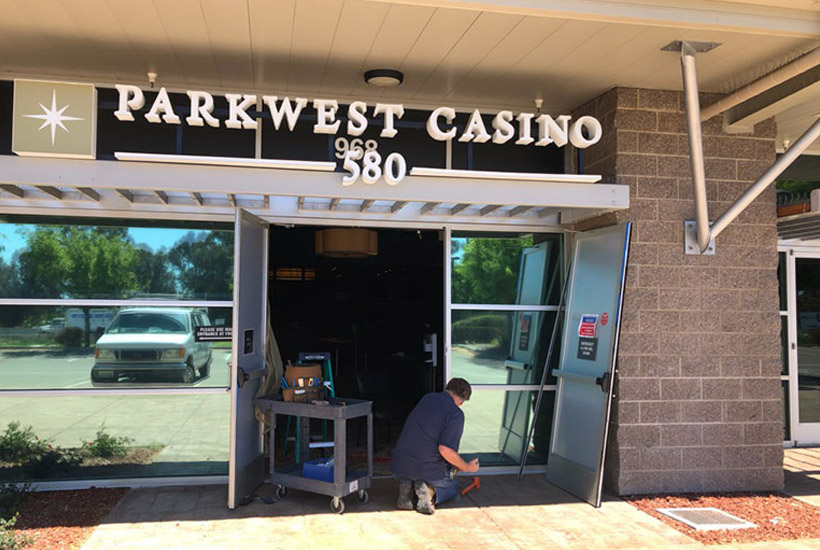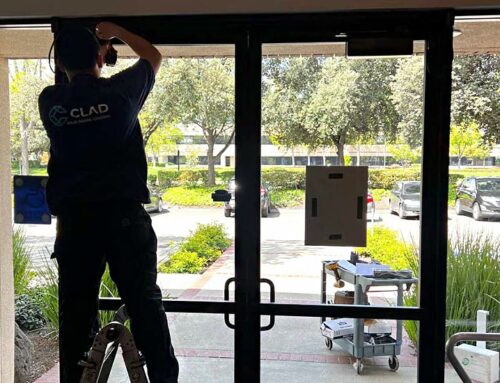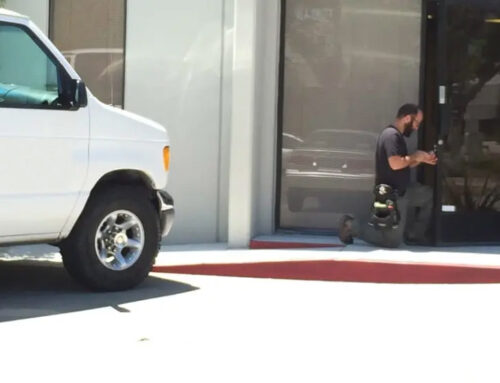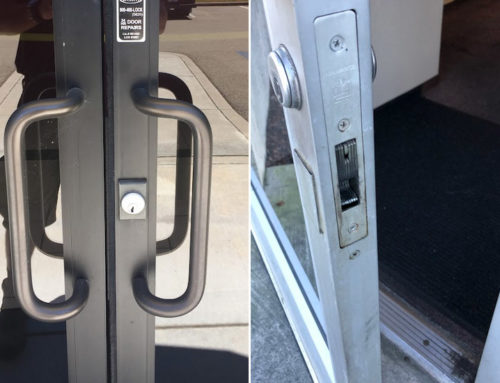Storefronts with broken glass are unsightly, especially when covered up with plywood. A broken storefront door can be a hassle not only for the business owner, but for customers as well. They are also a potential safety hazard and create security issues. It also looks bad to potential new customers. In a nutshell, no one wants to see a storefront with broken glass.
How does glass become damaged?
Many things can contribute:
- Heavy winds can kick up debris that can chip away at the glass, especially if they are older or already damaged.
- Rocks, balls, tree limbs, heavy storms, and debris from nearby traffic or auto accidents can cause glass to crack, shatter, or break entirely. Auto damage is possible through impact through air, ground or in worst case scenarios actual collisions with a building envelope structure.
- Heavy impact isn’t always unintentional; glass doors and windows can be easy targets for criminals. Often, they’ll smash a window to grab whatever they can.
- Subpar installations. Mishaps or oversights in the installation process can have lasting effects and render glass weaker over time.
- Window seals and insulation degrade over time, which leaves glass and entryway structures vulnerable to damage. The expanding and contracting of air between pains could lead to cracks as windows age. Condensation and fog on windows indicate that a glass upgrade is needed.
Once you realize that you need to replace your storefront door, it needs to happen quickly in order to not cost you revenue or possible theft. Unfortunately, these replacements come at a cost.
Do I need to replace the door frame?
The need to change the frame for a new glass storefront depends on several factors, including the condition of the existing frame, the type and size of the new glass, and any specific requirements or regulations in your locality. Here are a few scenarios to consider:
- Existing frame is in good condition: If the current frame is structurally sound, free from damage, and meets the requirements for the new glass storefront (e.g., size, weight, and design), it may be possible to retain the existing frame. In this case, the glass can be replaced while keeping the frame intact.
- Existing frame is damaged or incompatible: If the frame is damaged, shows signs of wear and tear, or is incompatible with the new glass storefront (e.g., size, weight, or design constraints), it is advisable to replace the frame as well. This ensures proper support, stability, and functionality for the new glass installation.
- Local regulations and building codes: Local regulations and building codes mat dictate certain requirements for storefront frames, including their materials, dimensions, and installation methods. If the existing frame does not comply with these regulations or if the new glass requires a different frame type to meet the code requirements, you may need to change the frame.
- Aesthetic considerations: Sometimes, changing the frame is desired to achieve a specific aesthetic or design goal. If you’re looking to update the overall appearance of your storefront or want a different frame style to complement the new glass, it may be necessary to replace the frame.
The experts at CLAD can guide you on whether a frame replacement is necessary or if the current frame can be retained for the new glass storefront.







